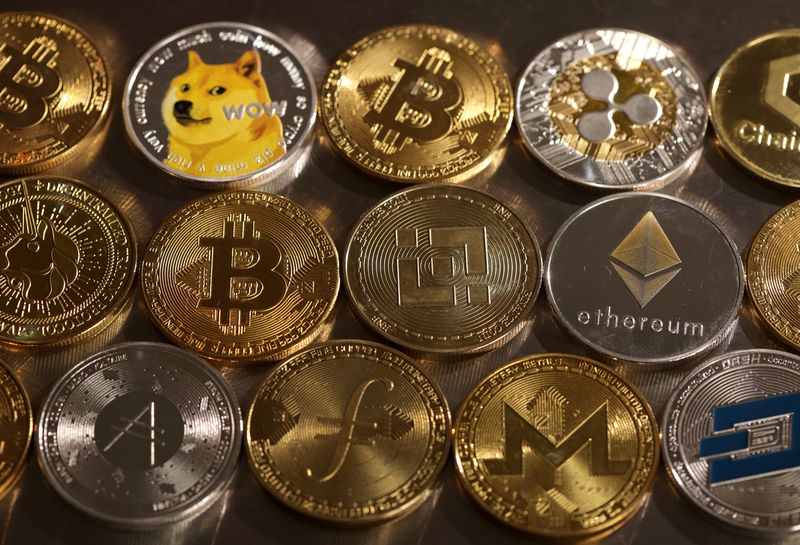By Hannah Lang
(Reuters) - Bitcoin isn't the only asset experiencing a late summer slump.
Stablecoins, cryptocurrencies typically pegged to real-world assets like the U.S. dollar, have wilted to their lowest market capitalization in over two years, as subdued trading volumes and a weaker dollar weigh on the market for the tokens.
In fact, they're suffering more than most.
While the entire crypto ecosystem has bounced back somewhat from its 2022 lows, the market cap of the stablecoin sector is set to decline for the 18th consecutive month, according to research firm CCData. It has shrunk by almost a tenth this year, standing at $124.4 billion as of Sept. 14.
"A lot of the appetite for stablecoins, because predominantly they are dollar-denominated ones, has to do with appetite for the dollar," said James Butterfill, head of research at CoinShares. A jump in the dollar index on interest rate hikes last year was accompanied by a big rise in stablecoin volumes, he added.
Yet all is not equal: Dollar-pegged Tether, the biggest stablecoin, is bucking the losing trend.
It hit an all-time high of $83.8 billion in July, according to CoinGecko, after spending the first three months of this year below $80 billion, and has since dipped to around $82.9 billion.
Paolo Ardoino, the chief technology officer of Tether, said the coin's value had been supported by its popularity in certain parts of the world.
"The reason why Tether has a stickiness among its users is the entire emerging markets, the entire central South America and Central Asia, basically runs on Tether," he added.
'TEMPORARY DE-RISKING'
While only a fraction of the crypto market, worth more than $1 trillion, stablecoins play a key role for traders, allowing them to hedge against spikes in prices of other tokens, like bitcoin, or to store idle cash without transferring it back into fiat currency. Some enthusiasts also envision stablecoins being used as a form of payment.
But the market for the tokens has languished since last year's collapse of TerraUSD, an algorithmic token that was once the fourth-largest stablecoin, whose downfall was the first domino in a series of dramatic failures for the industry.
The market has also been hit by the losses of Binance's dollar-linked token BUSD, which is down about 89% from an all-time high hit in November. In February, the New York Department of Financial Services ordered issuer Paxos to stop minting the token, which was once the third-largest stablecoin.
Though Paxos is maintaining support for BUSD through at least February 2024, a Binance spokesperson said the company is encouraging users to trade their balances for other stablecoins.
USD Coin (USDC), the second-largest stablecoin, has seen its market cap slide more than 53% from the all-time high it hit in June last year, and is now hovering above $26 billion.
Both Tether and USDC lost their pegs to the U.S. dollar at points last year: Tether when TerraUSD collapsed in May 2022, and USDC in March when Silicon Valley Bank — where the token's issuer Circle Internet Financial held $3.3 billion of its cash reserves — failed.

The failure of SVB - along with other regional banks earlier this year - is still causing uncertainty in the market, said Dante Disparte, chief strategy officer and head of global policy at Circle, although he emphasized that growth is not the company’s only metric of success.
"There has been a sort of temporary de-risking from the U.S., but it's not a function of regulatory ambiguity," he said. "It's more a function of the lingering effects of the banking crisis, and I think even there, we will start to see some corrections in the market."